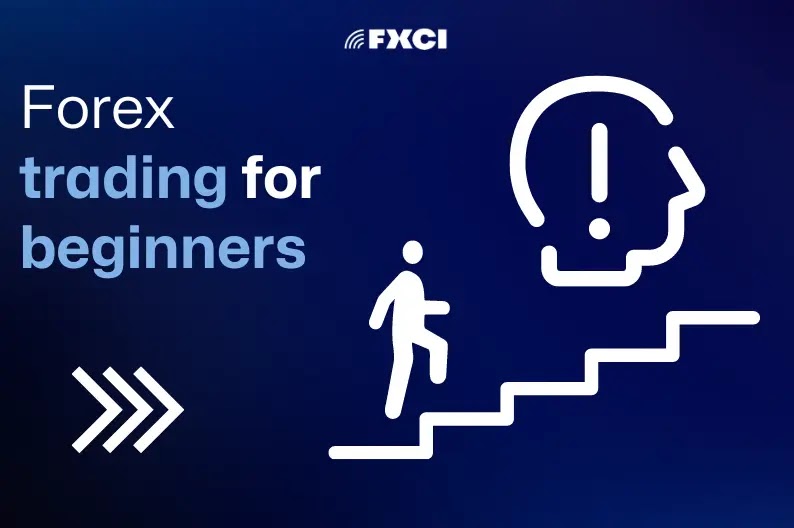Forex trading (foreign exchange) is the process of buying and selling currencies on the largest and most liquid financial market in the world. Every day, trillions of dollars are exchanged, making Forex a dynamic and potentially profitable market for traders. However, success in Forex requires an understanding of market fundamentals, the right strategies, and disciplined risk management.
This guide provides an in-depth look at Forex trading, covering essential concepts, trading strategies, tips for success, and risk management.
What is Forex Trading?
At its core, Forex trading involves exchanging one currency for another with the aim of profiting from fluctuations in exchange rates. Unlike traditional stock markets, Forex operates globally across different time zones, allowing for 24-hour trading during the week.
Forex transactions are conducted in currency pairs, with the most commonly traded pairs being:
- EUR/USD (Euro/US Dollar)
- GBP/USD (British Pound/US Dollar)
- USD/JPY (US Dollar/Japanese Yen)
- AUD/USD (Australian Dollar/US Dollar)
The goal of Forex traders is to predict whether one currency will rise or fall against another and to capitalize on those movements.
Key Concepts in Forex Trading
- Leverage and Margin: Leverage allows traders to control a larger position with a smaller amount of capital. For example, a leverage ratio of 50:1 allows a trader to control $50,000 with just $1,000 in their account. However, while leverage amplifies profits, it can also magnify losses.
- Pips: A pip (percentage in point) is the smallest unit of price movement in a currency pair. For most pairs, a pip is equal to 0.0001 of the quoted price. For example, if the EUR/USD pair moves from 1.2000 to 1.2001, it has increased by one pip.
- Spread: The spread is the difference between the bid and ask prices of a currency pair. The bid price is the amount buyers are willing to pay for the currency, while the ask price is what sellers are willing to accept. The spread represents the broker’s profit and can vary depending on market conditions.
- Lot Sizes: In Forex trading, currencies are traded in lots. A standard lot equals 100,000 units of the base currency, a mini lot equals 10,000 units, and a micro lot equals 1,000 units. Traders can choose the lot size based on their account size and risk tolerance.
Top Forex Trading Strategies
Successful Forex traders employ various strategies to maximize their profits. Below are some of the most popular methods:
- Scalping: Scalping is a short-term trading strategy where traders aim to make small profits on numerous trades throughout the day. Scalpers typically hold positions for only a few minutes or seconds and focus on capturing quick price movements.
- Day Trading: Day traders open and close all their trades within a single trading day. They avoid holding positions overnight to minimize the risks of adverse market movements. Day trading relies heavily on technical analysis and chart patterns to identify opportunities.
- Swing Trading: Swing traders hold positions for several days or even weeks, capitalizing on short- to medium-term trends. This strategy is less stressful than scalping or day trading and allows traders to analyze both technical indicators and fundamental factors.
- Position Trading: Position traders focus on long-term trends, holding trades for months or even years. They use fundamental analysis, including economic data, central bank policies, and geopolitical events, to inform their decisions.
Choosing the Right Forex Broker
Selecting a reliable Forex broker is a critical step for any trader. Here are some factors to consider:
- Regulation: Choose a broker that is regulated by a reputable authority, such as the Financial Conduct Authority (FCA) in the UK or the Commodity Futures Trading Commission (CFTC) in the US. Regulation ensures that the broker operates transparently and follows strict guidelines.
- Spreads and Commissions: Look for brokers that offer competitive spreads and low commissions. Tight spreads are particularly important for day traders and scalpers.
- Trading Platform: The broker’s platform should be user-friendly and offer essential tools such as real-time charts, technical analysis tools, and risk management features like stop-loss orders.
- Leverage Options: Ensure that the broker offers suitable leverage options based on your risk tolerance. Higher leverage can lead to greater profits but also increases the risk of significant losses.
- Customer Support: Reliable customer support is essential, especially if you encounter issues with your account or platform during trading hours.
How to Develop a Forex Trading Plan
A successful Forex trading plan should be detailed and tailored to your financial goals, risk tolerance, and trading style. Here’s how to create an effective plan:
- Set Clear Goals: Define your trading objectives, whether it’s earning supplemental income or becoming a full-time trader. Set achievable goals with specific timelines.
- Risk Management: Establish how much of your capital you are willing to risk on each trade. A general rule of thumb is to risk no more than 1-2% of your account balance on a single trade.
- Trading Strategy: Choose a strategy that aligns with your personality and lifestyle. If you have the time to actively monitor the market, day trading or scalping may be suitable. If not, swing trading or position trading might be better options.
- Entry and Exit Rules: Clearly define the criteria for entering and exiting trades. For example, you might enter a trade when a specific technical indicator signals a trend reversal and exit when the price hits a certain level of profit or loss.
- Review and Adjust: Regularly review your trading performance to identify areas for improvement. Adjust your plan as needed based on your results and changing market conditions.
Managing Risk in Forex Trading
Risk management is crucial to long-term success in Forex trading. Here are some effective risk management techniques:
- Use Stop-Loss Orders: A stop-loss order automatically closes your position when the price reaches a predetermined level, limiting your losses. Setting stop-loss orders ensures that your losses are manageable and prevents emotional decision-making.
- Position Sizing: Calculate the size of your position based on your risk tolerance and account size. For example, if you are willing to risk 1% of a $10,000 account, you would risk $100 per trade.
- Diversify Your Trades: Avoid placing all your capital in a single trade or currency pair. Diversify your trades to spread risk and reduce the impact of adverse movements in one currency.
- Avoid Overleveraging: Leverage can amplify both profits and losses. Using too much leverage increases your risk of losing your entire account balance on a single trade. Always use leverage responsibly and consider the risks involved.
- Stay Informed: The Forex market is influenced by various factors, including economic data, political events, and central bank decisions. Stay informed about global news and market developments to make informed trading decisions.







Rubina shoib jafri 00918009149992 or00918009141432
Halam Halam Halam Halam Halam Halam Halam Halam Halam Halam
وحيد سعد حسن مغاذي
جمهوريه مصر العربيه
01225716459
01273521706